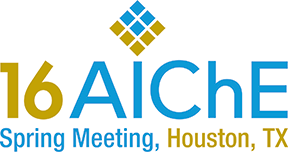

Stepping Beyond HAZOP and LOPA
|
J. Wayne Chastain, P.E. B-18 Kingsport, TN 37662 (423) 224-0553
|
Chris Devlin, CPSP Celanese The Bishop Plant Hwy 77 South Bishop, TX 78343 (361)584-6394
|
|
|
Dr. Thomas Mueller BASF SE GUS/AB - M940, 67056 Ludwigshafen, Germany +49-621-60-47677 |
Karen Study, P.E. The Dow Chemical Company 6519 State Hwy 225 Deer Park, TX 77536 (281)228-8679
|
Abstract
For operations where application of standards, regulations and/or Recognized and Generally Accepted Good Engineering Practices may not be sufficient to address risk, several options exist. For qualitative assessment of process hazards, HAZOP and What-If reviews are two of the most common petrochemical industry methods used. Up to 80% of a company’s process hazard analysis may consist of HAZOP and What-If reviews. [1] After the process hazard analysis, LOPA is commonly used throughout industry to evaluate the required safety integrity level for instrumented protection layers in a semi-quantitative manner. [2] HAZOP, What-If and LOPA are all straightforward methods and are relatively easy to perform. However, much like a hammer, they are not always the best tool for a given job. At times, more advanced methodologies such as Fault Tree Analysis, Quantitative Risk Assessment, Event Tree, Failure Mode and Effects Analysis and Human Reliability Analysis are necessary to properly assess risk. However, these more advanced tools come with a price. They are often more expensive, time consuming and require a higher level of expertise. The decision to use these higher level methodologies is not taken lightly and different companies use different criteria for determining when to take this next step. This paper will present approaches by four different companies, BASF, Celanese, The Dow Chemical Company, and Eastman Chemical Company. Each company will outline criteria used to determine when to go beyond HAZOP, What-If and LOPA and will present examples where more advanced techniques were used. The intent of this paper is to provide readers with real world examples that demonstrate the appropriate application of the ‘right’ tool and to illustrate what criteria can be used to make informed decisions regarding selection of a process hazard analysis methodology.
Keywords: HAZOP; LOPA; Quantitative Risk Assessment; Hazard; SIS; What-If; Fault Tree; Event Tree; Failure Mode and Effects Analysis; Human Reliability Analysis; HRA; FTA; QRA; FMEA
Copyright © Retained by Authors, April, 2016 UNPUBLISHED
References:
[1] Nolan, D.P. (1994). Application of HAZOP and What-If Safety Reviews to the Petroleum, Petrochemical and Chemical Industries - 1. Purpose. (pp. 1). William Andrew Publishing/Noyes. Online version available at: http://app.knovel.com/hotlink/pdf/id:kt003X3L98/application-hazop-what/purpose
[2] Dowell, Arthur M. (1997). Layer of Protection Analysis: A New PHA Tool After HAZOP, Before Fault Tree Analysis, “International Conference and Workshop on Risk Analysis in Process Safety”, 1997, CCPS/AIChE
